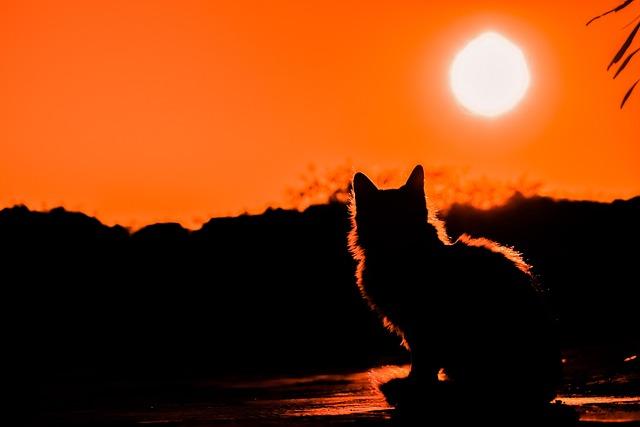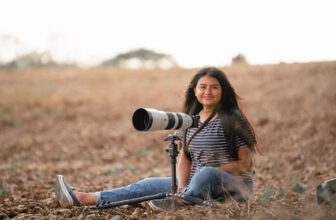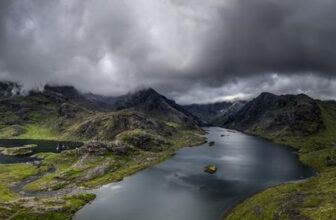Mastering the Art of Landscape Photography: Expert Tips
GoogleAds

Landscape photography has long been a beloved art form, capturing the beauty and essence of the world around us. For aspiring photographers looking to master the craft, expert tips and techniques can make all the difference in creating stunning and memorable images. In this article, we will delve into the world of landscape photography, exploring key insights and strategies from seasoned professionals to help you elevate your skills and capture breathtaking landscapes with precision and creativity.
Introduction
As you embark on your journey to master the art of landscape photography, you are entering a world of beauty, creativity, and endless possibilities. Capturing the natural world in all its glory requires skill, patience, and a keen eye for detail. In this post, we will delve into expert tips and techniques that will help you take your landscape photography to the next level.
One of the most important aspects of landscape photography is composition. A well-composed shot can make all the difference in creating a stunning image. Consider using the rule of thirds to create balanced and visually appealing compositions. Placing your main subject off-center can add interest and depth to your photos.
Lighting is another crucial element in landscape photography. The golden hours, which occur shortly after sunrise and before sunset, provide soft, warm light that can enhance the beauty of your photos. Be mindful of the direction and quality of light when shooting landscapes, as it can dramatically impact the mood and atmosphere of your images.
When photographing landscapes, it’s essential to pay attention to the foreground, middle ground, and background of your composition. Including elements in each of these areas can create a sense of depth and scale in your photos. Experiment with different focal lengths and perspectives to find the most compelling composition for your scene.
don’t be afraid to get creative with your landscape photography. Experiment with long exposures, unique angles, and unconventional compositions to push the boundaries of traditional landscape photography. Remember, the key to mastering this art form is practice, persistence, and a willingness to think outside the box.

Choosing the Right Equipment for Landscape Photography
When it comes to landscape photography, having the right equipment is essential to capturing stunning images that truly showcase the beauty of the natural world. Whether you are a beginner or a seasoned pro, selecting the right gear can make a world of difference in the quality of your photos.
One of the most important pieces of equipment for landscape photography is a high-quality camera. Look for a DSLR or mirrorless camera that offers manual shooting modes, a wide dynamic range, and the ability to shoot in RAW format for maximum flexibility in post-processing.
Investing in a sturdy tripod is also crucial for capturing sharp, clear images, especially in low light conditions or when using slow shutter speeds. Look for a tripod that is lightweight yet durable, with adjustable legs and a reliable locking mechanism.
Another essential piece of gear for landscape photography is a set of high-quality lenses. A wide-angle lens is ideal for capturing sweeping vistas and expansive landscapes, while a telephoto lens can help you isolate distant subjects and capture intricate details.
Lastly, don’t forget to pack essential accessories such as lens filters, a remote shutter release, extra batteries, and a camera bag to protect your gear while out in the field. By , you can elevate your craft and capture images that truly showcase the beauty of the natural world.
Understanding Composition Techniques for Stunning Landscapes
Landscape photography is a beautiful art form that allows us to capture the stunning beauty of the world around us. To truly master the art of landscape photography, it is essential to understand and utilize composition techniques that will elevate your images to the next level.
One key composition technique for capturing stunning landscapes is the rule of thirds. This technique involves dividing your frame into a 3×3 grid and placing your main subject or points of interest along the grid lines or at the intersections. This creates a more visually appealing and dynamic composition.
Leading lines are another important composition technique for landscape photography. These are lines within the frame that lead the viewer’s eye into the image, creating depth and drawing them into the scene. Whether it’s a winding river, a path through the mountains, or a row of trees, leading lines can add visual interest and guide the viewer through your photograph.
Using different perspectives can also greatly enhance your landscape photography. Experiment with shooting from low angles to capture interesting foreground elements like flowers or rocks, or try shooting from a high vantage point to show the vastness of a landscape. Changing your perspective can add depth and dimension to your images.
Lastly, don’t forget about the importance of lighting in landscape photography. The golden hours of sunrise and sunset can provide beautiful, soft light that enhances the colors and textures of a landscape. Pay attention to the direction of light and how it interacts with your subject to create a more dynamic and visually appealing image.

Utilizing Natural Light to Enhance Your Photos
When it comes to capturing stunning landscape photos, utilizing natural light is key. The way sunlight interacts with the environment can greatly enhance the mood and atmosphere of your images. By mastering the art of using natural light in your photography, you can take your landscape shots to the next level.
Tips for Utilizing Natural Light:
- Golden Hours: Shoot during the golden hours of sunrise and sunset for soft, warm light that creates depth and dimension in your photos.
- Diffused Light: Overcast days provide soft, diffused light that is ideal for capturing details and textures in your landscapes without harsh shadows.
- Silhouettes: Experiment with shooting silhouettes against the bright light of the sky to create dramatic and intriguing compositions.
When shooting landscapes, pay attention to the direction and quality of light to make the most of your photos. Backlighting can create stunning silhouettes, while side lighting can add depth and dimension to your images. By understanding how light interacts with your surroundings, you can create visually interesting and compelling landscape photos.
| Tip | Description |
|---|---|
| Avoid Harsh Midday Sun | Avoid shooting landscapes in the harsh midday sun, as the light can create harsh shadows and wash out colors. |
| Use Filters | Consider using filters to enhance the colors and contrast in your landscape photos, such as polarizing filters or graduated ND filters. |
Experiment with different lighting conditions and techniques to see how they affect your landscape photos. Whether you’re shooting at sunrise, under an overcast sky, or during the golden hour, each lighting scenario offers unique opportunities to capture the beauty of the natural world. Mastering the art of utilizing natural light in your photography will help you create breathtaking landscape images that stand out from the rest.

Mastering Depth of Field and Focus in Landscape Photography
Understanding Depth of Field
Depth of field is a crucial aspect of landscape photography as it determines how much of your image is in focus. By mastering depth of field, you can create stunning photographs with a strong sense of depth and dimension. To achieve a shallow depth of field, use a wide aperture (such as f/2.8) to blur the background and draw attention to your main subject. On the other hand, a narrow aperture (such as f/11 or f/16) can help you capture sharp details from the foreground to the background.
Focusing Techniques
When shooting landscapes, it’s essential to nail your focus to ensure sharp images. One popular technique is the hyperfocal distance method, where you focus at a specific point to maximize depth of field. Additionally, using the back-button focus technique can give you more control over where to focus in your composition. Experiment with different focusing techniques to find what works best for your landscape photography style.
Using Leading Lines
Leading lines are a powerful composition tool that can guide the viewer’s eye through your image. Incorporate natural elements like rivers, roads, or fences to lead the viewer into the scene and create a sense of depth. By strategically placing leading lines in your composition, you can enhance the overall impact of your landscape photographs and create a more dynamic visual experience.
Composition and Framing
Composition is key in landscape photography, as it can make or break the success of your images. When framing your shots, consider the rule of thirds, leading lines, and the foreground-background relationship. Experiment with different angles and perspectives to find the most compelling composition that highlights the beauty of the landscape you’re capturing.
Post-Processing Tips
Post-processing can take your landscape photography to the next level by enhancing colors, contrast, and sharpness. Use editing tools like Adobe Lightroom or Photoshop to fine-tune your images and bring out the details in your landscape shots. Avoid over-editing and strive for a natural look that complements the beauty of the landscape you’ve captured.

Tips for Capturing Dynamic Landscapes in Different Weather Conditions
Whether you’re a seasoned photographer or just starting out, capturing dynamic landscapes in various weather conditions can be a challenging yet rewarding experience. Weather plays a crucial role in landscape photography, as it can determine the mood and atmosphere of your shots. With the right techniques and a keen eye for detail, you can master the art of landscape photography in any weather.
One important tip for capturing dynamic landscapes in different weather conditions is to pay close attention to the lighting. Light can dramatically alter the look and feel of a landscape, so be sure to take advantage of the golden hours – the hour after sunrise and before sunset – for soft, warm light that enhances the textures and colors of your surroundings. Additionally, consider shooting during overcast days for even lighting that eliminates harsh shadows.
Another key aspect to consider when photographing landscapes in varying weather is the composition of your shots. Use leading lines, framing techniques, and the rule of thirds to create visually striking images that draw the viewer’s eye into the scene. Play around with different angles and perspectives to add depth and dimension to your photographs.
When shooting landscapes in rainy or foggy weather, embrace the atmospheric conditions to create moody and ethereal images. Use a tripod to keep your camera steady, and experiment with long exposures to capture the movement of raindrops or fog swirling around a landscape. Add a sense of drama and mystery to your shots by incorporating elements such as silhouettes or reflections.
Lastly, don’t be afraid to venture out in extreme weather conditions to capture landscapes in their most dramatic and awe-inspiring state. Whether it’s a stormy sky, a snow-covered landscape, or a misty morning, inclement weather can add a sense of urgency and intensity to your photographs. Just be sure to protect yourself and your equipment from the elements, and always prioritize safety when shooting in challenging weather conditions.

Editing and Post-Processing Techniques for Perfecting Your Landscape Photos
When it comes to capturing the beauty of landscapes through photography, editing and post-processing techniques play a crucial role in enhancing the final result. Whether you’re a novice or a seasoned photographer, mastering these techniques can take your landscape photos to the next level.
One key editing technique to perfect your landscape photos is adjusting the exposure. By tweaking the exposure settings, you can bring out the details in both the highlights and shadows of your image, creating a more balanced and visually appealing photograph.
Another important post-processing technique is color correction. Utilizing tools like the white balance and saturation controls, you can enhance the colors in your landscape photos to make them more vibrant and true to life. Remember, subtle adjustments can make a big difference!
Composition is also a critical aspect of landscape photography. During the editing process, consider cropping your image to improve its overall composition. By removing distracting elements or repositioning the focal point, you can create a more visually impactful photograph.
Lastly, don’t forget about sharpening and noise reduction. Sharpening can help enhance the details in your landscape photos, while noise reduction can improve the overall clarity of your image. By carefully adjusting these settings, you can achieve a professional-looking photograph that truly captures the beauty of the landscape.
Q&A
Q: What is the importance of landscape photography?
A: Landscape photography allows photographers to capture the beauty and majesty of the natural world, preserving stunning landscapes for future generations to enjoy.
Q: What are some expert tips for mastering the art of landscape photography?
A: Expert tips for landscape photography include using a tripod for stability, utilizing the rule of thirds for composition, playing with different lighting techniques, and experimenting with different angles and perspectives.
Q: What gear is essential for landscape photography?
A: Essential gear for landscape photography includes a sturdy tripod, a wide-angle lens, a polarizing filter to reduce glare and enhance colors, and a remote shutter release for reducing camera shake.
Q: How can photographers take advantage of natural light for landscape photography?
A: Photographers can take advantage of natural light for landscape photography by shooting during the golden hours of sunrise and sunset, when the light is soft and warm, and by using filters to control the intensity and direction of light.
Q: How can photographers enhance their post-processing skills for landscape photography?
A: Photographers can enhance their post-processing skills for landscape photography by learning how to use editing software like Adobe Lightroom and Photoshop to fine-tune colors, contrast, and sharpness, and by experimenting with different techniques to create unique and eye-catching effects.
Final Thoughts
mastering the art of landscape photography takes patience, skill, and dedication. By following expert tips such as understanding lighting, composition, and post-processing techniques, photographers can elevate their work to new levels. With practice and a keen eye for detail, anyone can capture stunning landscapes that will truly stand out. So grab your camera, head outdoors, and start perfecting your craft today. Happy shooting!
GoogleAds







